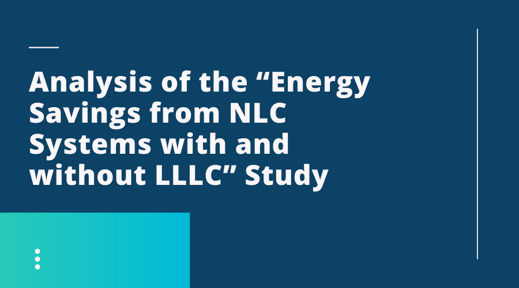
Introduction & Overview
For the second time, the DesignLights Consortium®, in partnership with the Northwest Energy Efficiency Alliance – supported by Energy Solutions – issued a report examining hundreds of Network Lighting Control (NLC) system installations and calculated their energy savings. This analysis is incredibly important to businesses considering these systems for their buildings as it summarizes key findings to inform energy savings estimates as well as a variety of use cases and energy impacts available when installed with high quality LED products.
The data was collected, aggregated, and analyzed building-, zone- and fixture-level energy monitoring interval data from NLC systems, including those with and without LLLC, in 194 buildings across a variety of building types in North America, with an average of 13 weeks of monitoring data per building. Overall, the study found average energy savings from all NLC systems to be 49%, although values are highly site-specific (see Figure 1 and Table 1 on page 7 of the study).
While the response demonstrates a commitment from some manufacturers and users of these systems to improve our collective understanding, it also highlights some of the hurdles to better tracking and examining how these systems impact lighting and energy performance.
One of the key observations is an inconsistency in how system performance data is accessed by manufacturers and their customers. This is made more complicated as data privacy agreements restrict wide scale anonymized access to data. While data privacy is important, this emerging technology presents an opportunity to improve the lighting experience and reduce energy costs as summarized in this report's findings.
There seems to exist an opportunity for those willing to take on the massive data management requirements to provide an ongoing safe place where controls data can be uploaded and analyzed on an ongoing basis. This information would further and more accurately quantify usage patterns and energy savings trends while aiding utilities in their quest to create the financial incentives and program channels to accelerate these systems from nice-to-have, to must-have.
About Luminaire Level Lighting Controls (LLLC)
Luminaire level lighting control (LLLC): The capability to have a networked occupancy sensor and ambient light sensor installed for each luminaire or kit, and directly integrated or embedded into the form factor during the luminaire or kit manufacturing process.
Networked lighting control (NLC) systems: NLC systems are lighting systems with a combination of sensors, network interfaces, and controllers that effect lighting changes in luminaires, retrofit kits, or lamps.
The main benefit of LLLCs is that each fixture can become a semi-autonomous zone that can respond to small changes in the area under each luminaire. This level of granular control can yield significant savings. The LLLC strategy includes a complete set of sensors for occupancy, daylight, user tuning, and even air temperature into each luminaire – rather than controlled as a unit.
Key Findings and Recommendations
(Pages 8-9)
Finding #1: The portfolio-level average energy savings across all buildings in this study
was 49%.
Recommendation #1: Based on this dataset, utility and energy efficiency programs are
able to use 49% as the best estimate of average portfolio-level energy savings for NLC
incentive programs.
Finding #2: The NLC systems with LLLC showed overall higher savings, although
additional study is needed to confirm this finding.
Recommendation #2: Based on this finding, it may be worthwhile to explore energy
efficiency programs around LLLC for greater average energy savings.
Finding #3: Ownership of, management of, and access to NLC energy data varies from
NLC manufacturer to manufacturer.
Recommendation #3: Energy efficiency programs for NLCs should drive the sharing and
use of anonymized NLC energy data for all participating projects.
Additional Findings and Recommendations
(Pages 10-12)
Finding #3: Ownership of, management of, and access to NLC energy data varies from
NLC manufacturer to manufacturer.
Recommendation #3: Energy efficiency programs for NLCs should drive the sharing and
use of anonymized NLC energy data for all participating projects.
Finding #4: The process for exporting static attributes of the energy data, such as the
post-NLC rated power, is more error-prone than for time-series data and can skew the
estimated savings.
Recommendation #4: As part of the NLC energy data, essential static attributes of an
NLC installation should be required and verified carefully to ensure accuracy and quality
of the analyses.
Finding #5: Most manufacturers do not have an existing mechanism to easily export the
data required for energy efficiency program evaluation.
Recommendation #5: Energy efficiency programs for NLCs should standardize the NLC
energy data reporting format and requirements to facilitate program participation and
streamline the process. Based on these reporting guidelines, manufacturers should
consider developing administrator-specific reporting functionality to support the energy
efficiency program data intake process.
Finding #6: In this study, buildings with NLC systems had significantly longer operating
hours than typical prescribed estimates of building operating hours.
.png?width=500&name=2019%20e%20news%20spotlight%20logo%20(1).png)




